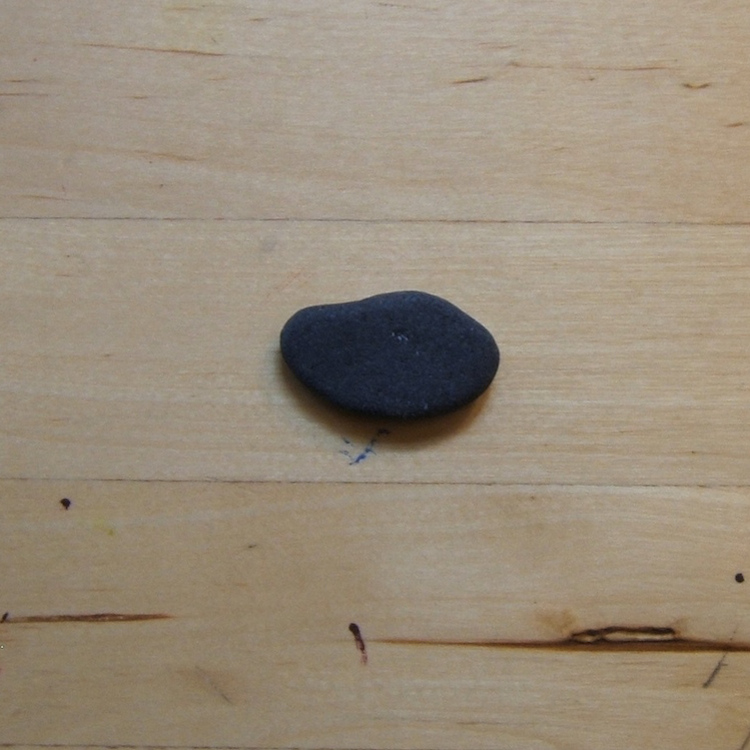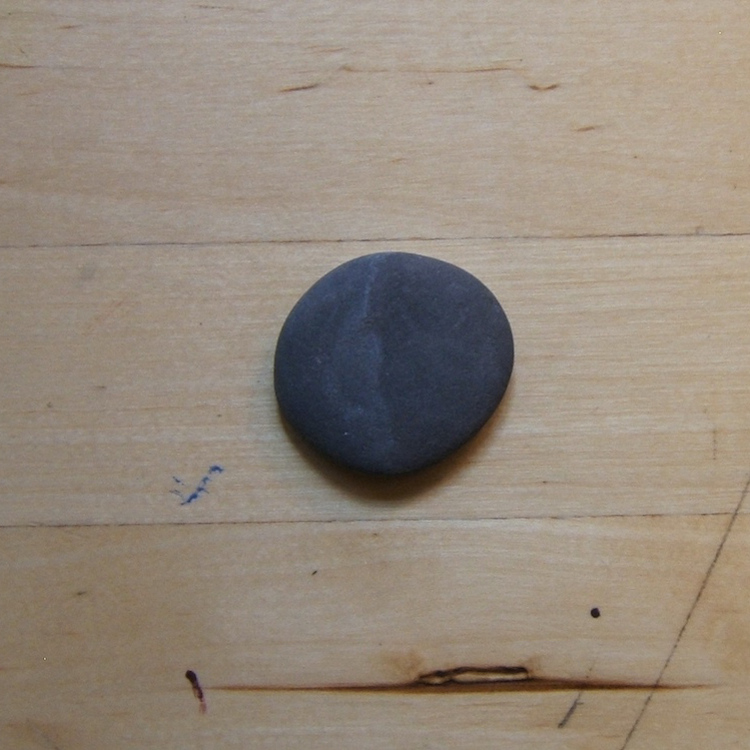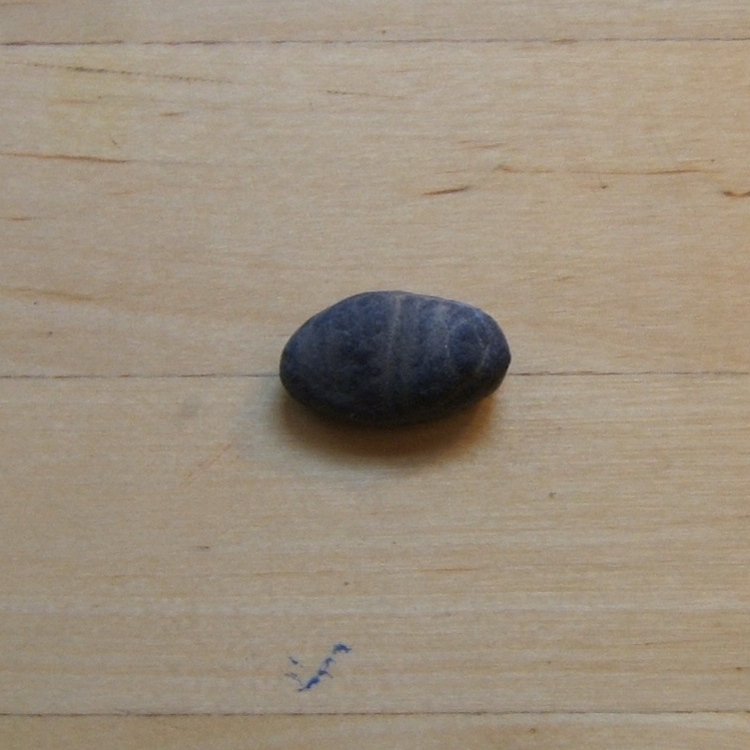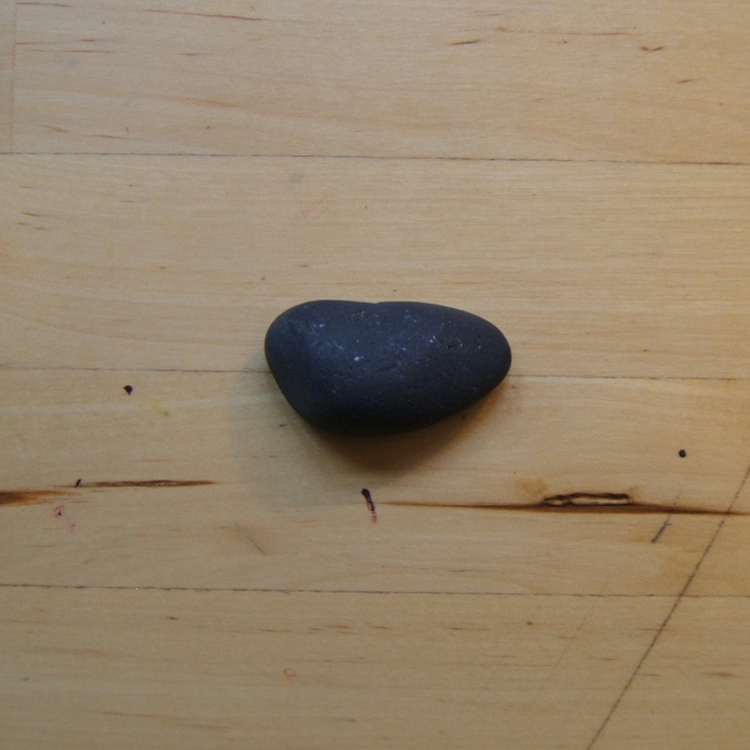Sand, Sea, Sky
Marion Bleeke
Introduction
In creating this exhibit I decided to begin by taking Lara Farina’s metaphor of beachcombing as strictly as possible and this meant working rather intuitively: because in my experience of beachcombing, I typically collect things without a clear intention or motivation or outcome in mind. Instead, I pick up whatever appeals to me, for whatever reason, and without much reflection on those reasons. And so I picked one item from our “shore” collection each day over six days, picking whatever appealed to me on that particular day, and creating a page in the exhibit for it. However in this case, I did take the next step of reflecting in writing on why I picked that particular item, on what specific appeal it had for me: this writing forms the first paragraph on each page in the exhibit itself, and the title of each page names its item’s specific appeal.
To stay as close as possible to the beachcombing metaphor, I then chose to pair the items that I had selected for the exhibit with a number of actual beachcombed objects, stones and shells that I had gathered on a trip to the Oregon coast several years ago. I picked a stone or shell to pair with each item in the exhibit by trying to match the specific appeal that I had identified for that item with a similar quality in the beachcombed object: my reflections on that match form the second paragraph on each exhibit page. Then I pressed the metaphor of beachcombing as a way of thinking about our relationship to the past. I considered how the specific appeal I had identified for each exhibit item, the quality that I had identified for the shell or stone, might also appear in that relationship, sometimes thinking specifically about my own work and sometimes more broadly. This work forms the third and last paragraph on each page.
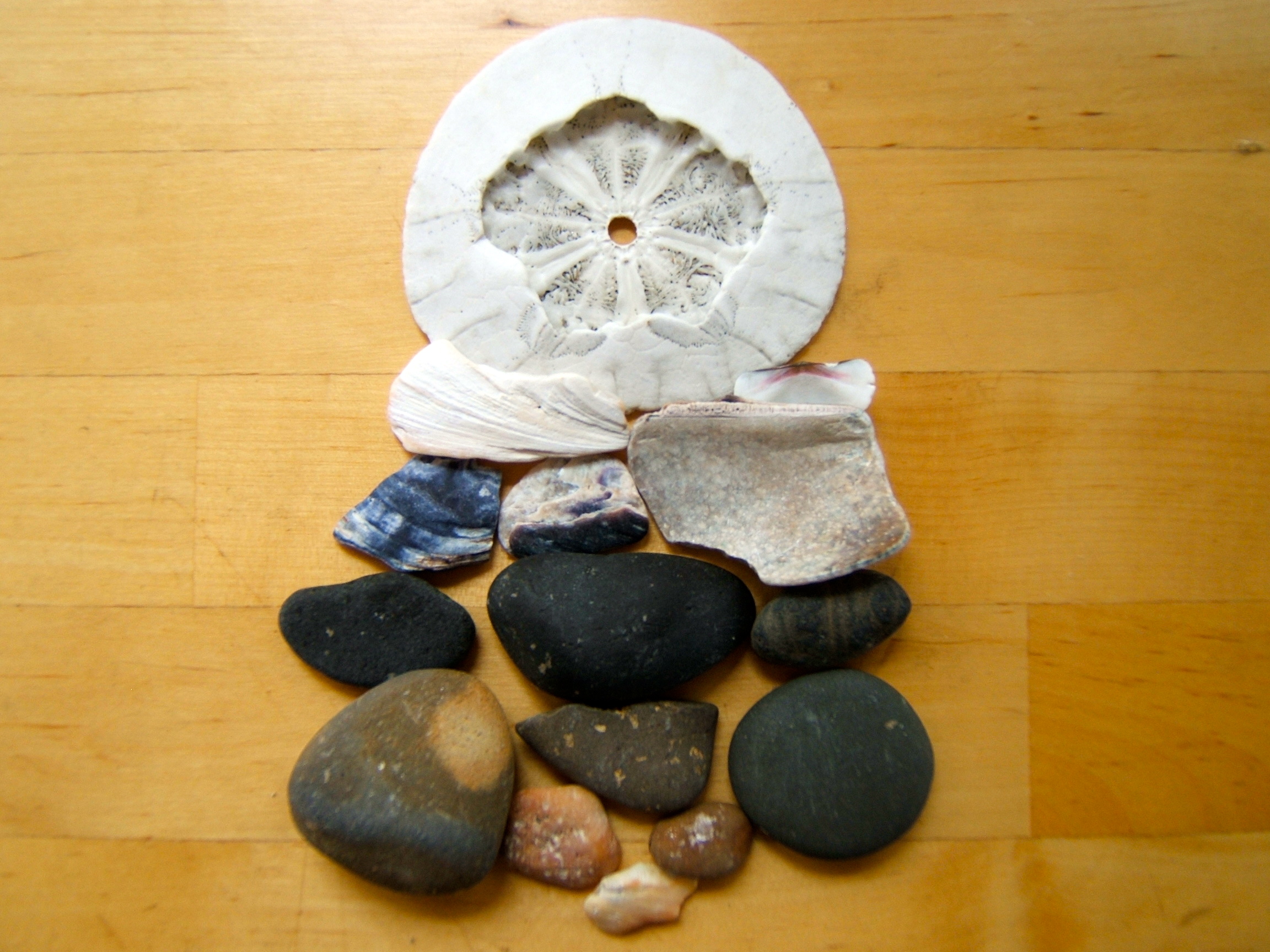
Finally, for some reason, after that trip to the Oregon coast, I had assembled my beachcombed stones and shells into a landscape and photographed it: this is the image that appears here. I decided to allow this image to dictate the structure of the final exhibit, taking the location of each beachcombed shell or stone in the landscape as determining its page’s place in the exhibit as a whole. This also established the sections for the exhibit and their order, moving from foreground to background as Sand, Sea, and Sky.
Sand: Making

This one reminds me of my childhood, because as a child I had miniaturized environments tucked in different parts of my room. There was, for example, a horse farm in my closet; plastic horses, cardboard box buildings, bits and pieces of other things. The horses were store bought, but most of the rest was hand made. I don’t know why I put it in the closet, though. Maybe just to keep it out of the way. Because my room as a child was a world of its own that contained multiple different worlds — mostly of my own making. I had two dollhouses in there as well; one made by my best friend’s mother and the other that my father and I made. I made the furniture, the dolls, and the accessories for both. Making, rather than playing or pretending, was my primary way of engaging with each of these different worlds.
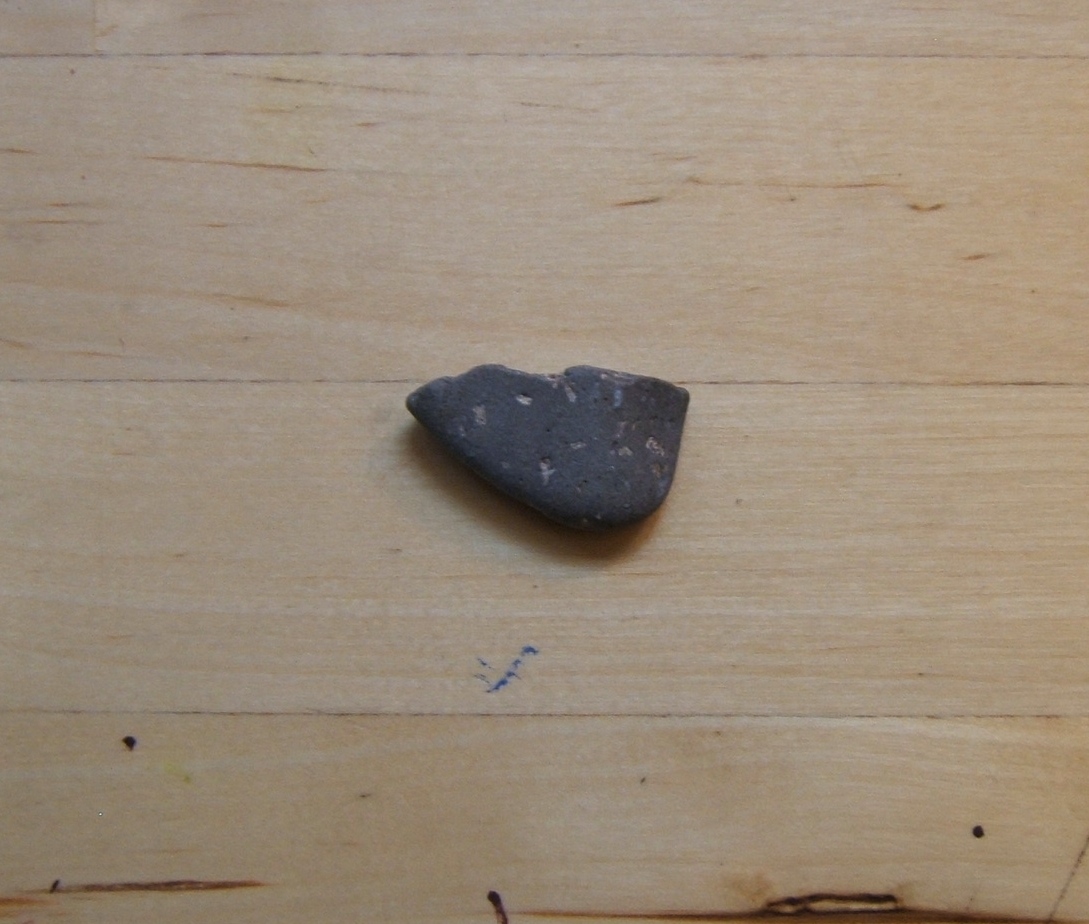
To pair with this item, I chose what looks to me like a fragment from a made thing, rather than a naturally-occurring rock or shell, although I’m not really sure what it is. It looks made to me because of its irregularities: the flecks of peachy-orange that appear throughout its grey-green material, as if it is a composite made up of different things, like the combination of store-bought and home-made in my horse farm; and its one meandering side, as if it was broken off of something larger, like whatever larger world that farm would have been part of.
The fact that this object appears to be made up of different materials and was also apparently part of something larger makes me think of how the work of making is never finished. You can put things together, but the result will only ever be a fragment of some absent larger unknown whole. And that seems to me like a fair metaphor for our work on or with the past. We make pasts as miniaturized world in our scholarship by painstakingly putting together our arguments from various bits and pieces: an image, a text, a quote from a secondary source, an observation of our own. But those put-together pasts are only parts of the past itself, the past as unknown — and ultimately unknowable — whole. And so our work goes on... and on and on.
Sand: Difficulty
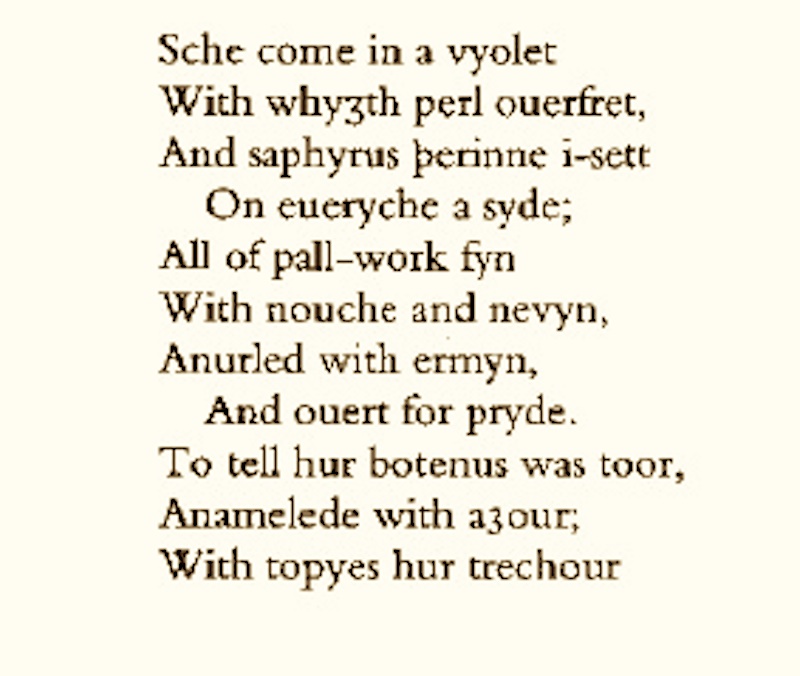
This isn’t something that immediately stood out to me. It’s text, after all. There’s nothing immediately arresting about it visually. But what got me engaged in it was trying to read it. And specifically the difficulty in doing so: having to sound it out to transform the unfamiliar spellings into familiar words. And then the payoff for doing so being an impression of material splendor: a violet overlaid with pearls and with sapphires set on every side. The experience of reading it has me thinking about the value of the difficult and different both in pulling you in and in rewarding you for your effort. Although there are limits on that effect as well: I can't get much past the sapphires here; then I lose interest.
I chose to pair this item with a group of black stones, using their shared black color to figure opacity or difficulty, something like my initial difficulty in reading the text passage. Looking at them together, however, I can begin to see differences in their blackness that give me a way of “reading” their combination, something like sounding out the words in the text. The larger oblong rounded stone is the blackest and the shiniest of them; the long flat stone is a softer black, more matte, with some more grey to it; the flat round stone really is grey by comparison, and two tones of grey, with a dividing line running somewhere near its center; and the smaller oblong rounded stone has brown or tan lines that run around it and warm up its overall color. I don’t know where to go or what to do with those observations, however; again I begin with something opaque to me, find a way to begin to read it, but can only get so far.

The content of the text fragment and the process of reading it reminds me of these inventories of the possessions of French kings that I was reading a few years ago. These too I had to puzzle out because they were in fourteenth-century French, and, again, that action of puzzling made a list of things become — somewhat — engaging. And the result was precious stones and metals, in seemingly endless accumulations. And the combination also reminds me of my initial encounter with medieval art in my introductory art history survey course. The difficulty here came in the format of the course itself: imagine a dark lecture room, after lunch, warm, with the slide projectors humming away - all the things that tend to sleep. But the slides themselves: the color; the glowing light. The difficulty of simply paying attention combined with the lure of the material itself in its glorious gleam and shine. In teaching today, we often try so hard to make our material relatable and our courses do-able for our students. But maybe that’s a wrong turn, at least to a degree. Maybe we are depriving them of the engagement that comes from the different and the difficult and from puzzling it out on your own — at least as far as you can.
Sea: In/Complete
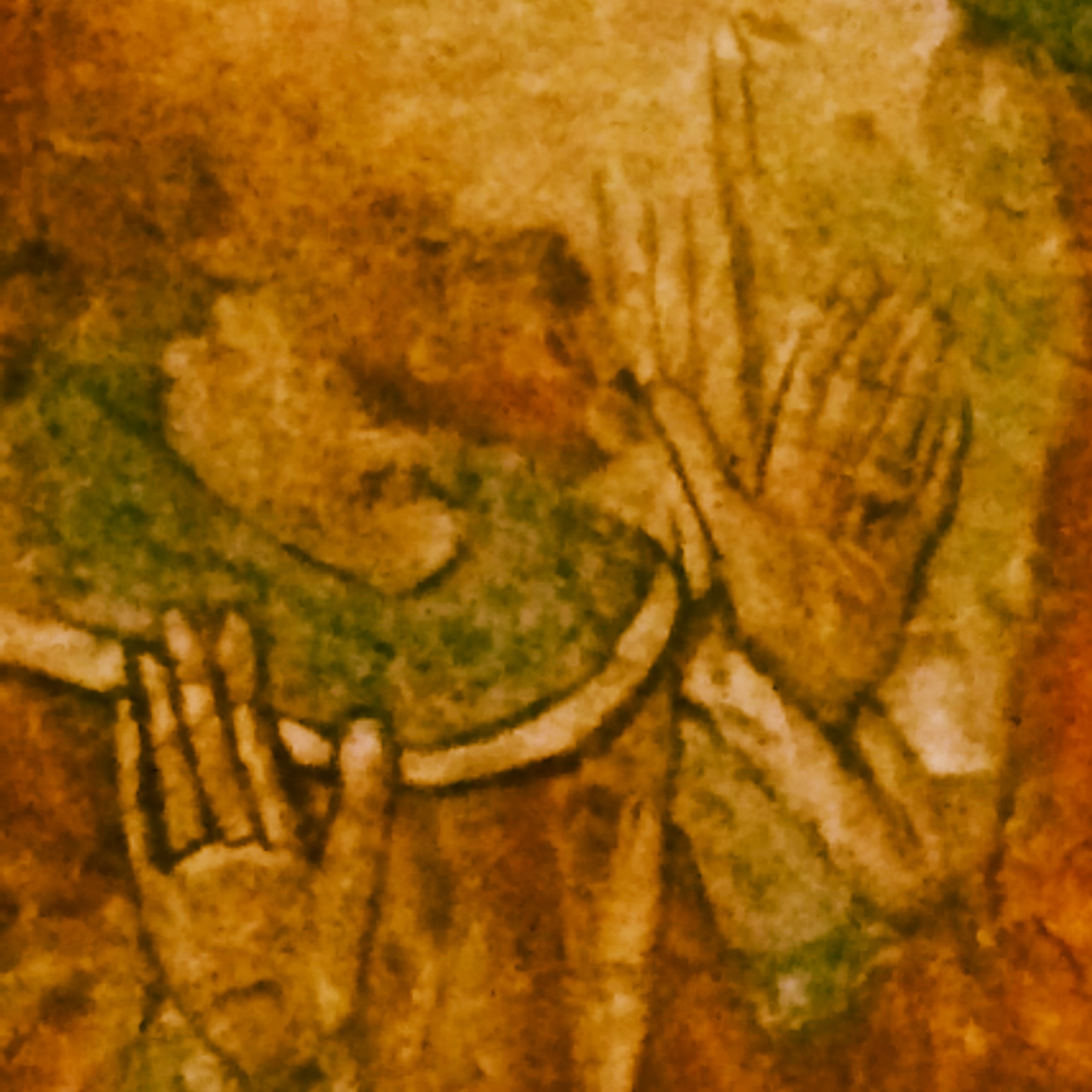
The appeal of this one lies in its incompleteness, because of what that invites me to do with it. I could complete it in my mind, imagining what the frescoed figure’s missing face might look like, based on my familiarity with other similar things. Or I could allow the missing face to shift my attention to the figure’s hands and so allow me to see the image as complete as it is. The front hand is the more strongly delineated of the two, with black lines distinguishing each finger from the others. Those fingers overlap with the figure’s green-and-white collar, which moves the eye around to the other hand. Here the three middle fingers blur together, but the pinky and especially the thumb are more clearly distinguished. The thumb is held at an angle that matches the angle of the figure’s beard; its outer outline becomes the beard’s front edge. And the figure has a green-and-white cuff, matching his collar, that makes a similar angle at the level of his wrist. That hand, therefore, seems to be directing attention back to its face, to what is now missing. It is as if the image as a whole was pointing to its own incompleteness. That has to be an accident, of course: the figure must have been meant to call attention to its face as present, and only the disappearance of the face changes its effect to calling attention to an absence. But still, as it stands today, incomplete becomes complete only to point back to its incompleteness.

I’ve chosen to pair this image with a small shell fragment. Because while I can see the shell as a fragment and so as incomplete, I can also see it as complete — as a little landscape all of its own, like choosing to see the fresco as completed by its hands. The mixed blues and white at the bottom become the sea, the bit of blue that extends up from there a wave, and the mixed whites, blues, purples, and greys at the top are the stormy sky. Each of these parts of the landscape is actually on a different plane — the sea raised up, the wave stepped down, and the sky stepped down again — as if the land were receding from me in space. But then, these different points in the landscape are obviously different layers of the shell that have been stripped away by the sea. And so its illusion of completeness as a landscape is in fact a function of its fragmentation as a shell, like the illusion that the fresco as a whole points to its own missing face. The complete is incomplete and the incomplete is a whole of its own fashioned by its missing parts.
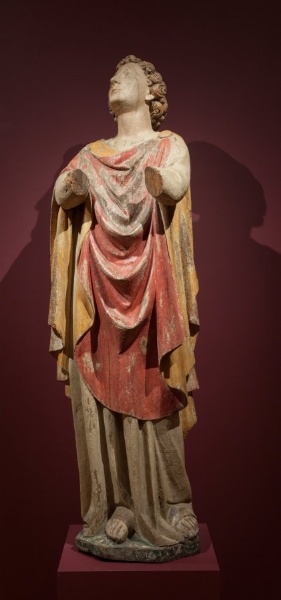
The fresco reminds me of this sculpture I love at the Cleveland Museum of Art that has the opposite lacunae; it has its head but is missing its hands. And because it’s sculpture, what you get is from that incompleteness is not just a blank surface, but these amputated appendages. Again I want to complete them — the figure’s hands would be a prayer gesture, although the more modern one of hands together rather than the Orans gesture the figure in the fresco makes. And I also want to look past them, to what their absence allows me to see, to the space that their absence creates. I’m thinking that this in/complete alternation may be central to art historical practice. On the one hand, there is the desire to restore or reconstruct the past: the artwork itself, its surroundings, its artist’s intentions, its viewers’ perceptions, its various contexts, etc.. On the other is the immediate lure of the objects as they exist today.
Sea: Wearing/Being
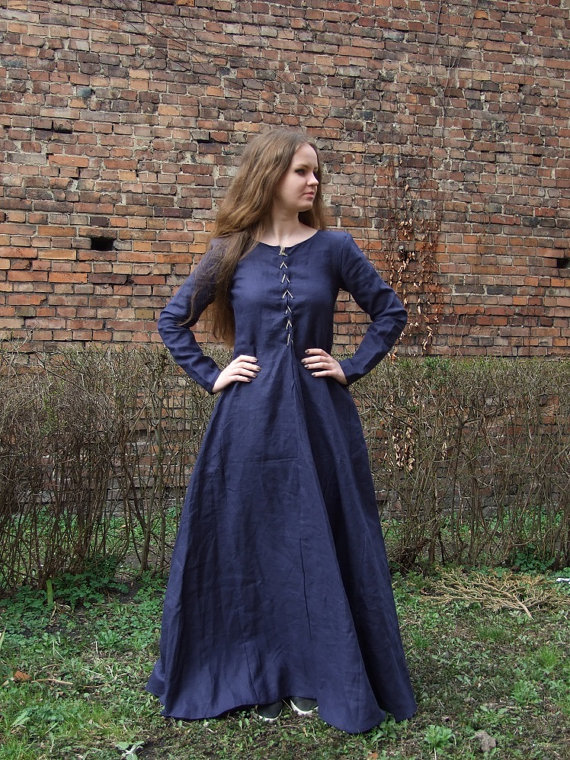
This one I picked because it is so obviously a photograph of a modern person in medieval dress. Because it reminds me of a photograph of myself as a child, along with a childhood friend, both in full Little House on the Prairie garb: long dresses, pinafores, sun bonnets, and for me long braids made out of yellow yarn that were pinned onto my bonnet to represent long hair. I loved Little House as a child, both the books and the t.v. show. I remember that on Monday nights, when the show was on, I got to stay up until 9pm, past my 8:30 bedtime, to watch the whole thing, but only as long as I already had my p.j.’s on. Outside of reading and watching, my primary way of relating to Little House was through clothing. Dressing in these clothes was a way of making myself into someone who inhabited that other world. And that wasn’t confined to dress up: my preferred ordinary clothes were a long dress, tights, and patent leather shoes, and I wore my hair long (but it was never long enough, thus the yarn braids).

As a match for this, I’ve chosen a larger curved shell fragment — specifically for its curved shape and so for the way it wraps around me as I hold it. It is a particularly good fit for my thumb. And for how good that feels: how comfortable and comforting. My thumb seems to nestle, settle, rest in its form. It even warms up as I hold it — as I am while I’m writing this. Its shape allows me to bring this other thing so close to me by enveloping part of my body in it, almost identifying my body with it, but also allowing it to offer my body — and myself — the support it seems to need. Like dressing up in those clothes brought the other world of Little House so close and apparently offered me so much comfort and ease (except, that is, for my never-long enough hair).

Little House also represents for me my first attraction to a past as a child. It was a very vague past that I referred to as “olden days” and was marked primarily by dress, by exactly the long dresses and long hair that I so longed to imitate. I wanted to belong to that other time and used my clothing to mark that desire for temporal otherness, until I got a little older and belonging, in the sense of fitting in with my peers at school, became more important. My interest in the past then shifted into reading: Jane Austen as a continuation of the “olden days” and fantasy literature as my first opening into the Middle Ages. In this way my allegiance to the past, my desire for temporal otherness, became internalized and so invisible to others.
Sky: Intimacy

Why this? Because as an image of intimacy it’s an image that invites intimacies, that seems to want to be picked. But at the same time, it's a very partial and hesitant intimacy. It’s just her one finger that touches the tips of his and that finger is burdened by the huge ring — it looks more like a donut — that cuts the touching tip of her finger off from the rest of her hand. Otherwise, the two of them are on opposite edges of the space. And she looks like she is trapped there, as one end of the S opens up behind her head and so seems to hold her head into place, and then its lower curve wraps around her body to do the same. So that if it’s an image of intimacy that seems to invite intimacies, it’s also an image that calls intimacy into question: how much is it forced? By whom and how? What power relationship does it depend on? Does it create?
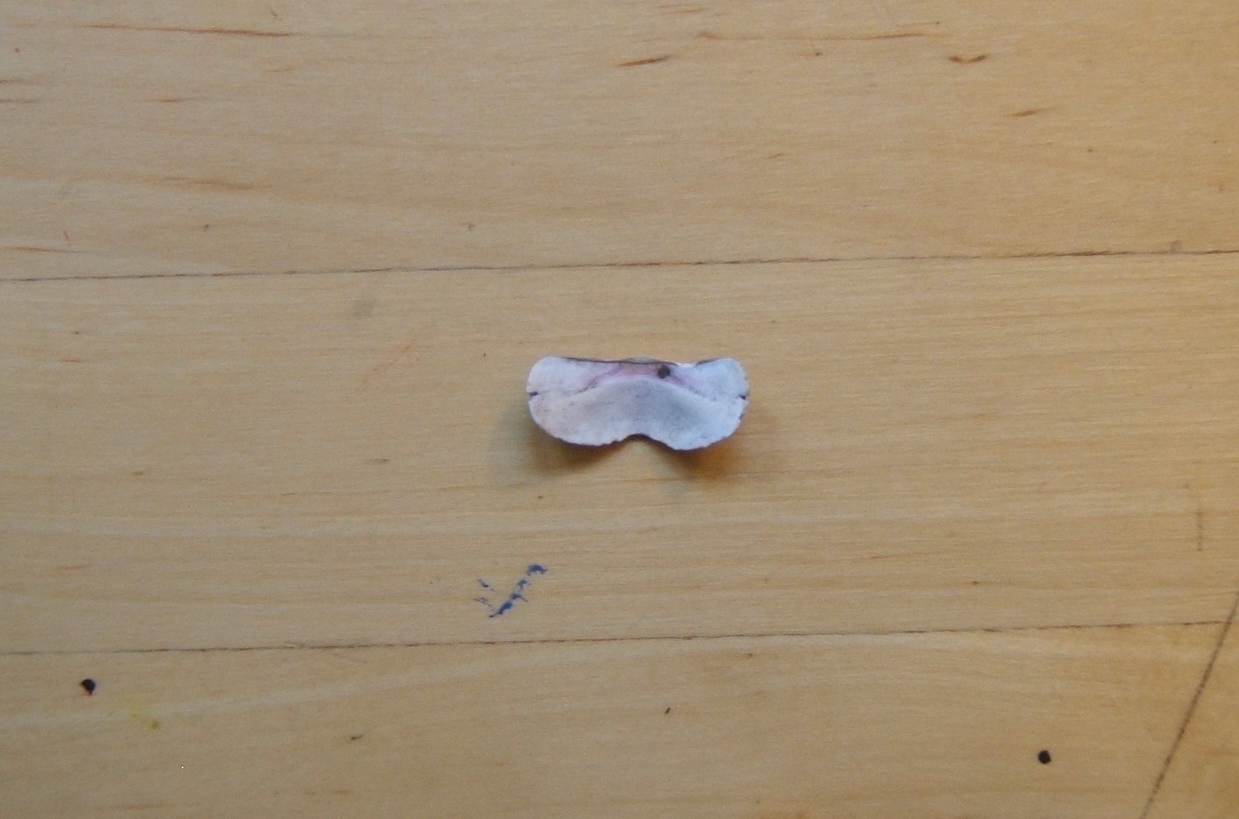
To go with this image, I picked a very tiny, thin, fragile, curved bit of a shell. I picked it first because of its small size, which forces you to bring it close, to make it an intimate object. And then also because of its thinness, its curved shape, and its apparent fragility; it could so easily break into two parts down its center. And there appear to be cracks beginning on both of its narrow ends. It could all just fall apart. Like the historiated initial, this shell again gets me thinking about intimacy and force or violence. What force is needed to maintain intimacy? And what force will shatter it into pieces? What do we risk when we draw things — or people — close to ourselves? And what do we risk in not doing so?
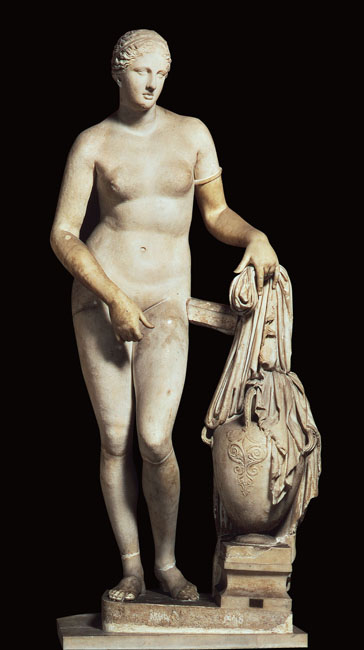
I could say something here about the violence we do to the past in drawing it close in our work, because of course we do that. But instead I want to wonder about the violence that the past — or things from the past — might do to us even as we draw them in close. I’m thinking here of a short story by Prosper Merimee, his Venus d’Ille, which features an ancient sculpture of the goddess that, once dug up, kills a man on his wedding day; the past uncovered, the promise of intimacy, and instead, death. How have we all been hurt by the things we study? And why do we keep at it despite the pain?
Sky: Energy
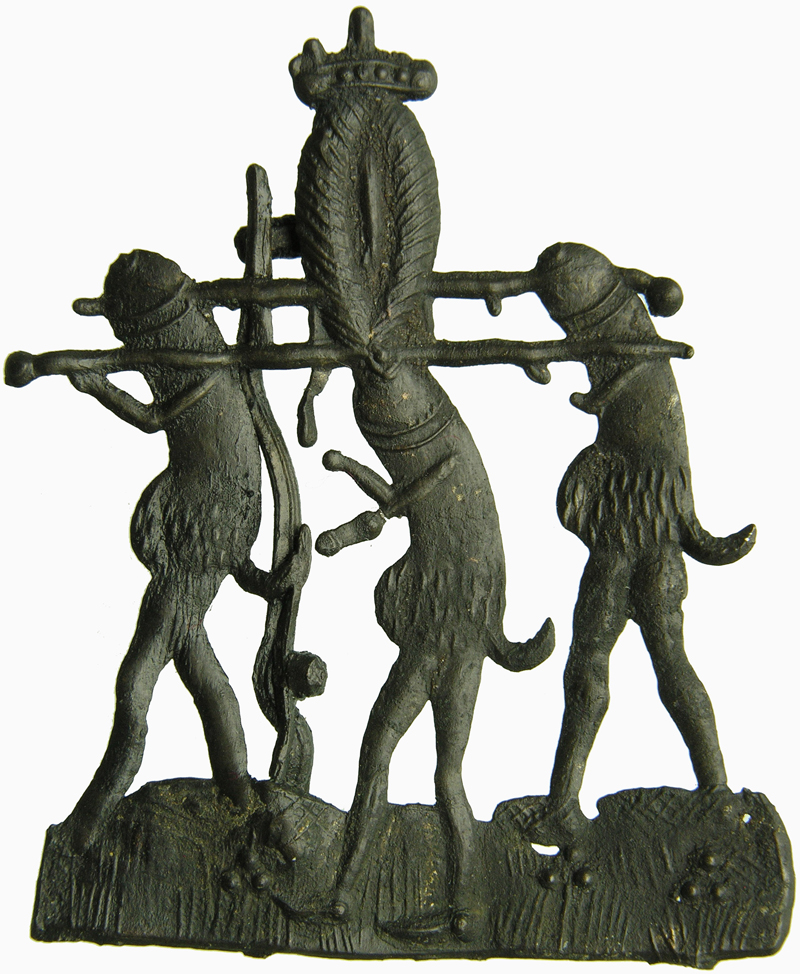
I picked this one (and picked it from the larger “shore” of the internet to add to our collective collection for this project) because of its energy and exuberance: the three phalli’s swinging arms, curling tails, and marching legs; the vulva’s long sinuous staff and tall pointed crown. The fact that these forms are penises and a vagina identifies their energy with sexuality — or better identifies sexuality as energy. Sexuality becomes animation here as its bodily bits spring up into an active life of their own. Knowing a little bit about it, I like the idea of a medieval person wearing this as a badge attached to their own clothes, further identifying the phalli’s movement with his or her own, its sexualized energy/energy as sexuality with his/her own body.

For this I picked a sand dollar that has been broken open, I believe by a bird to eat whatever originally lived inside of this shell. I picked it because its exposed interior has this starburst pattern of ribs and ridges that radiate out whole the whole in the center, expressing an energy that belongs to the shell itself and/or to its original inhabitant; something like the active lines of the phalli’s limbs and the vulva’s staff and crown. And I picked it because of the explosiveness of the hole that reveals that interior, the product of the bird’s activity. Here energy relates to eating rather than sex, but again it's a vital act, one necessary to sustain life.
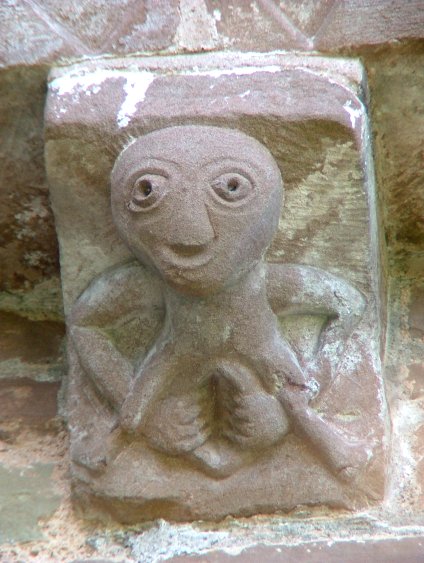
I picked this object from the internet to add here, finally, because I like the contrast it creates with what we think we are (supposed to) know about the Middle Ages as a “Dark Age” of religiosity, asceticism, and sexual repression. It is the same contrast that drew me to my dissertation topic: the sculptures known as Sheela-na-gigs, images of naked women shown actively exposing their genitalia. There is an energy in that contrast too. It’s the energy of sexuality in both of these examples, but also of the potential that the past always has to surprise us - to not be what we think it is or is supposed to be.
